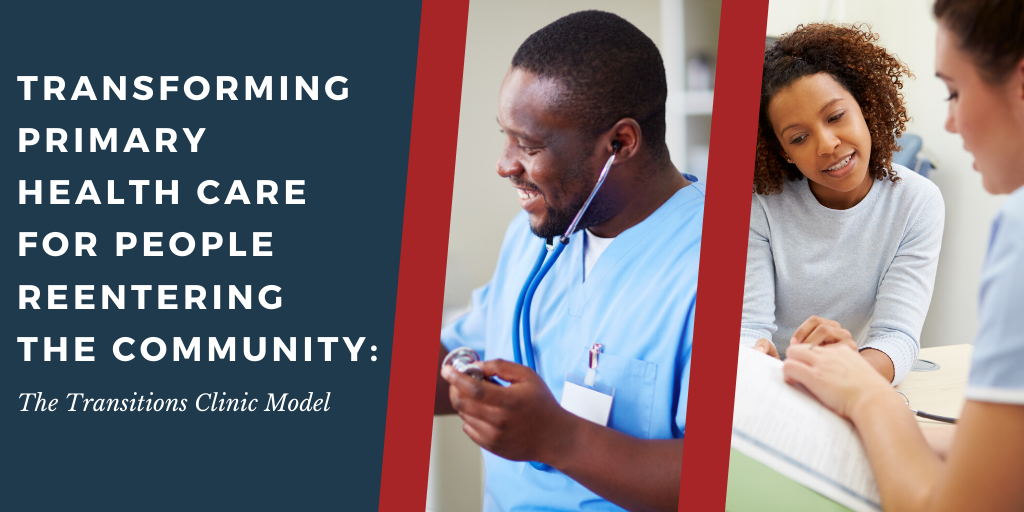Individuals returning from jail or prison often have significant unmet physical and behavioral health needs, including mental and substance use disorders, cardiovascular disease, diabetes, HIV, and hepatitis C. Many have histories of trauma and may have been further traumatized in the criminal justice system, particularly by such practices as solitary confinement, notes Aaron Fox, M.D., associate professor of medicine at Albert Einstein College of Medicine, Montefiore Medical Center, and director of the Bronx Transitions Clinic.
During the first 2 weeks following release, formerly incarcerated people are at a 12 times higher risk of death from their medical conditions than the general population. This makes immediate connection to primary care a top priority on reentry from jail or prison, but barriers remain high, explains Shira Shavit, M.D., clinical professor of family medicine at the University of California in San Francisco and executive director of the Transitions Clinic Network. “When people are first released, they have many competing priorities,” Dr. Shavit says. “They need to find a place to live, employment, reconnect with family, get food on the table. Sometimes those become barriers to seeking primary care services.”
Lack of continuity of care between prison or jail and community services and discrimination on the part of community providers also act as barriers to timely receipt of care, Dr. Shavit adds. Finally, she notes that many returning citizens have mental health and substance use disorders and trauma histories that may not be adequately addressed in traditional primary care. The Transitions Clinic model was created to address these challenges.
Transitions Clinics are based in primary care clinics such as community health centers and Federally Qualified Health Centers (FQHCs). Services are enhanced to meet the needs of formerly incarcerated people, and all Transitions Clinics feature the use of community health workers who have histories of incarceration. They are specially trained to work alongside the primary care team and provide important patient navigation and peer support services. Community health workers are integral to the Transitions Clinic model, and healthcare providers are trained to work effectively with these new team members, Dr. Shavit notes.
The Bronx Transitions Clinic, one of thirty-nine clinics operating in thirteen states and Puerto Rico, is housed in the Comprehensive Health Care Center, Montefiore’s largest FQHC, serving sections of the South Bronx that have a high prevalence of HIV infection, substance use disorders, and incarceration. The clinic works closely with the Osborne Association, a local reentry services provider. At thirteen New York State correctional facilities, Osborne Association staff members screen individuals for chronic health conditions, provide health education, and initiate case management. At release, a community health worker employed by the Osborne Association acts as a liaison between each formerly incarcerated individual and the primary care clinic, helping people get to their appointments, fill out necessary paperwork, and navigate the complex health care system.
One of the key features of the Bronx Transitions Clinic is its role in educating clinicians about working with populations that have multiple and complex needs. The Comprehensive Health Care Center is the training site for the primary care/social internal medicine residency program at Montefiore. “The focus of the residency program is on community-oriented primary care, establishing what the needs of the community are, and trying to meet those needs,” Dr. Fox says. He sees tremendous benefit in introducing doctors to this disenfranchised population, noting that nearly a dozen of the former residents have gone on to work at the Rikers Island jail, including the current medical directors and director of the Opioid Treatment Program. “They’re really trying to change the culture of correctional health from the inside,” Dr. Fox adds.
Transitions Clinics “are really transforming how primary care is practiced,” Dr. Shavit says. Flexible scheduling, a focus on behavioral health needs, and connections to community services that address the social determinants of health are some of the innovations they employ. At the Bronx Transitions Clinic, patients are integrated into their physicians’ regular primary care panel, ensuring continuity of care. The results speak for themselves. Numerous studies have revealed such outcomes as the following:
- Patients in the Transitions Clinic in San Francisco had 51 percent fewer visits to the emergency department compared with patients receiving expedited care in another primary care clinic.
- The Transitions Clinic program is associated with reduced reincarceration for technical violations and shortened time spent within correctional facilities.
- In the Bronx, 54 percent of the people who have HIV who follow up for care have a suppressed viral load after 6 months, Dr. Fox says. This compares to a multi-site study that showed only 38 percent of people with HIV who are released from jail remained in care after 6 months.
The Transitions Clinic Network provides a full range of services for health systems that want to create their own clinic. “We’ll do assessments of the sites to figure out which are the best places to put the Transitions Clinic program,” Dr. Shavit explains. “Then we work with those sites in building the program, implementing it, hiring and training both the community health workers and the staff, and then building all the complex relationships with the other social service and criminal justice agencies.” This is typically a year-long process, she adds.
The Transitions Clinic Network also offers networking and training opportunities for all member clinics. And its members advocate for broader changes that address such problems as mass incarceration and systemic racism in the criminal justice system.
For more information about the Transitions Clinic program, contact the San Francisco office of the Transitions Clinic Network at info@transitionsclinic.org.
Like what you’ve read? Sign up to receive the monthly GAINS eNews!


